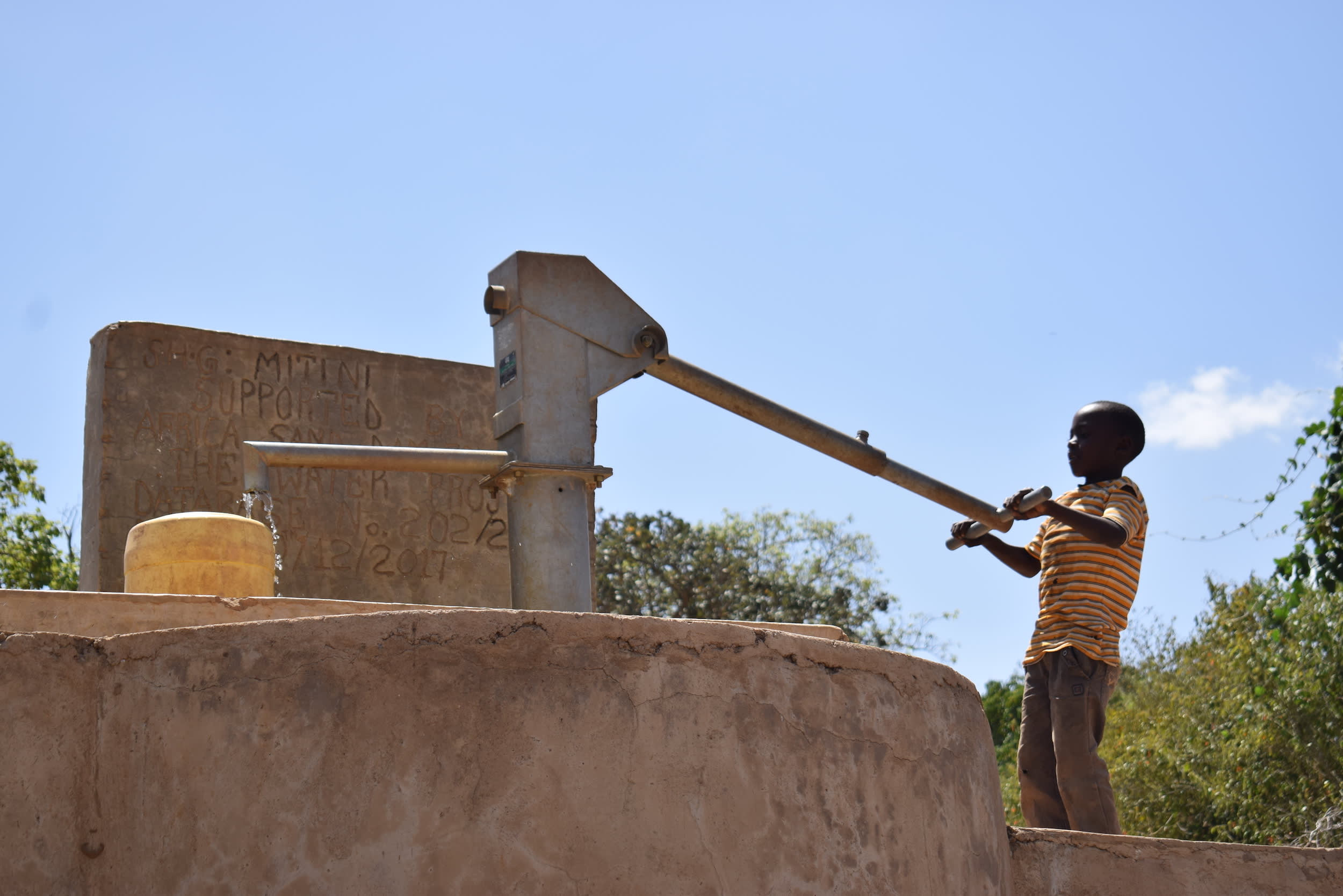This project is a part of our shared program with Africa Sand Dam Foundation. Our team is pleased to directly share the below report (edited for clarity, as needed).
Welcome to the Community
The Mitini Self-Help Group was formed in 2013 and registered with the government in 2015. It started with a membership of 40 people, but currently only has 30 active members. Its leadership committee is composed of 11 members; two male and nine female. The average age is 53 years and the mean number of family members is five.
The group is located at Mitini Village, which has a population of 8,478 people. (Editor’s Note: While this many people may have access on any given day, realistically a single water source can only support a population of 350-500 people. This community will be a great candidate for a second project in the future so that adequate clean water is available. To learn more, click here.)
Subsistence agriculture is the main source of livelihood for this community. When the rainfall pattern is better, the members harvest enough both for their families and to sell at the local market to earn money for other needs.
Water Situation
The main source of water for the Mitini Self-Help group is the river, where they scoop holes in the sand to get drinking water. During the dry periods they have to walk for long distances by the river, looking for areas where they can scoop holes and find water. Some members have been able to afford a plastic tank and gutter to catch rainwater, which lasts for a few weeks before needing another rain.
62-year-old Annah Mueni is a farmer who doesn't have any alternative but to fetch water from the river. "We fetch water from an underneath scoop holes at our stony river called Katheka. It's always crowded with many people fetching water from the same water point. It takes more than 30 minutes waiting for my turn. At my home, I don't treat drinking water. I use it for cooking, drinking and other household activities," she shared.
The water fetched from the holes is dirty, contaminated by erosion and surface runoff that washes things like animal feces into the water. Community members admitted that after drinking, they've suffered from waterborne illnesses like typhoid.
Sanitation Situation
100% of group members have a pit latrine at their home, though most of them just have a curtain hanging in the doorway that provides little privacy. There are no working hand-washing stations, but families do have other helpful tools like dish racks and clotheslines.
Around half of members pile their garbage up behind their compounds. To keep litter from blowing around in the wind and animals out, each home needs to have a deep pit to throw garbage in.
Plans: Hygiene and Sanitation Training
Since this is our first hygiene and sanitation training in Mitini, training will be held for three days. The members will learn about useful practices and tools to improve health, and will be encouraged to share those with their families and neighbors. Water transport, storage, and treatment methods will be taught, and hand-washing will be a focus. Group members will learn how to make their own hand-washing stations with everyday materials. To motivate participants, we must show the links between these activities and their people’s health.
Plans: Hand-Dug Well
This particular hand-dug well is being built adjacent to this group’s first sand dam project (click here to see), which will supply clean drinking water once it rains. We have supplied the group with the tools needed for excavation. With the guidance of our artisans and mechanics, the excavated well will be cased, sealed with a well pad, and then finished with a new AfriDev pump.
Excavation takes a month or more on average, depending on the nature of the rock beneath. Construction of the well lining and installation of the pump takes 12 days maximum. The well will be lined with a concrete wall including perforations so that once it rains, water will filter in from the sand dam.
This well will be located in Mitini Village, and will bring clean water closer to families having to walk long distances for their water.

 Protected Dug Well
Protected Dug Well
 Rehabilitation Project
Rehabilitation Project

























